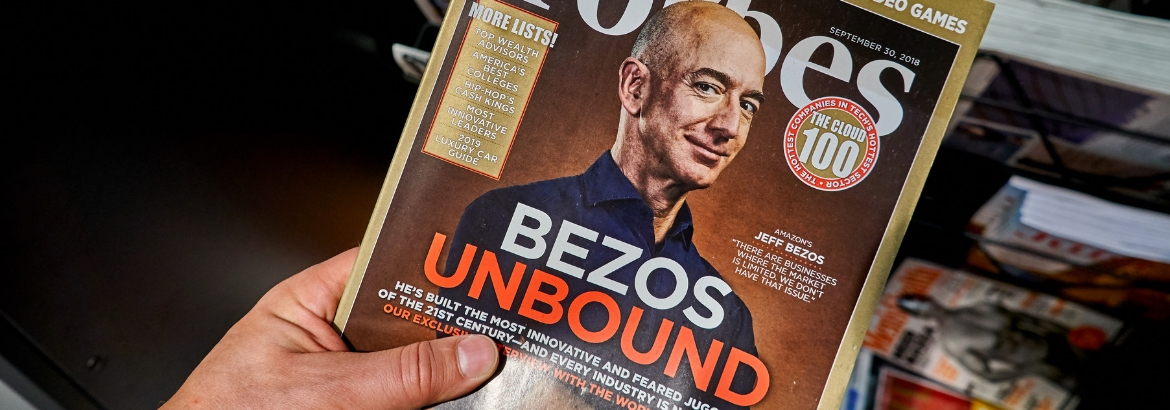By Justin Bariso
Bad meetings: We’ve all experienced them. Whether it’s poor planning, too much talking, or lack of preparation, bad meetings waste precious time and money.
But Amazon founder and CEO Jeff Bezos may have cracked the code for making meetings more productive. By means of his annual letter to shareholders, as well as a recent interview, Bezos gave some insight into what the Amazon meeting culture looks like.
It all comes down to following three simple rules.
“Two pizza” teams.
“We try to create teams that are no larger than can be fed by two pizzas,” said Bezos. “We call that the two-pizza team rule.”
If you’ve ever been in a meeting with too many people, you can understand the wisdom in this. The larger the team, the greater number of opinions–and the more difficult it becomes to reach conclusions and make decisions. And if some of those many people just like to hear the sound of their own voice, your meetings are bound to be time-suckers.
But with the two-pizza team rule, you get the balance of obtaining diverse viewpoints and ideas, while remaining agile and manageable.
No PowerPoint.
“No PowerPoints are used inside of Amazon,” Bezos proudly declares. “Somebody for the meeting has prepared a six-page…narratively structured memo. It has real sentences, and topic sentences, and verbs, and nouns–it’s not just bullet points.”
In his recent letter to shareholders, Bezos details the work that goes into these memos, which he says may take up to a week or more to write and refine:
“The great memos are written and rewritten, shared with colleagues who are asked to improve the work, set aside for a couple of days, and then edited again with a fresh mind. They simply can’t be done in a day or two.”
As my colleague Carmine Gallo recently pointed out, memos like these are a great idea because our brains process good storytelling much better than hard data. Such narrative memos give authors the chance to fully communicate the thoughts behind their ideas, and give meeting participants the chance to better understand full concepts.
Of course, none of that means anything if the meeting participants don’t prepare, which is what makes the third rule the best one of all.
Start with silence.
“We read those memos, silently, during the meeting,” says Bezos. “It’s like a study hall. Everybody sits around the table, and we read silently, for usually about half an hour, however long it takes us to read the document. And then we discuss it.”
You can imagine why this is so beneficial. How many times have you made it to an important meeting where, despite your best intentions, you’re simply not as prepared as you’d like to be?
“Just like high school kids, executives will bluff their way through the meeting, as if they’ve read the memo,” says Bezos. “Because we’re busy. And so, you’ve got to actually carve out the time for the memo to get read–and that’s what the first half hour of the meeting is for. And then everyone has actually read the memo, they’re not just pretending to have read the memo.”
Bezos has previously extolled the use of this method because it assures undivided attention on the part of everyone there. Additionally, it helps better prepare those who lead such discussions–because of the skill and focused thought needed to put these memos together in the first place. “Full sentences are harder to write,” explains the famous founder. “There is no way to write a six-page, narratively structured memo and not have clear thinking.”
Putting it into practice.
I’ve used this method in my own meetings, and I can vouch for its effectiveness. As the meeting moderator, you can be sure that everyone is starting off with a solid foundation and that they’re all on the same page. (Sorry, couldn’t resist.)
But most of all, you give your people what they need to do their best work:
Time.
Time for understanding. Time for extended reflection. Time for focused thinking.
All of which leads to deeper discoveries.
So, remember:
Two-pizza teams. No PowerPoint. Start with silence.
Follow these three simple rules, and transform your meetings from a waste of time into a source of brilliant ideas.
Justin Bariso is an author and a consultant who helps organizations think differently and communicate with impact. In 2016, LinkedIn named him the “Top Voice” in “Management and Culture.” His new book, EQ Applied, shares fascinating research, modern examples, and personal stories that illustrate how emotional intelligence works in the real world.
This article was first published on Inc.com. You can find the original here.

